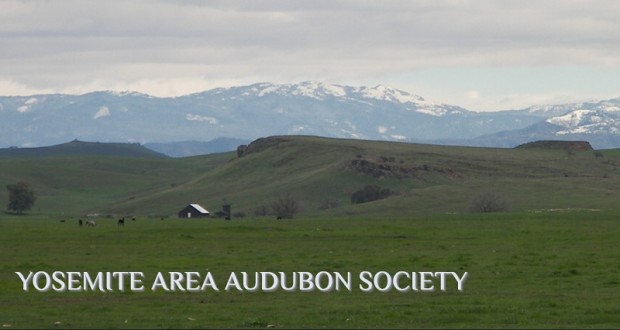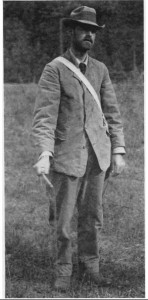Contributed by Len McKenzie —
University of California Berkeley professor Joseph Grinnell, in 1914, embarked on an intensive six-year ecological study of the animals of Yosemite National Park, the first of its kind in western North America.
The goal of this study was simple: to understand the animals of Yosemite and their “….local distribution…general life areas…, and food relations; breeding habitats and behavior.” In the course of the survey, which included 957 work days in the park from 1914 to 1920, Grinnell and his students collected 4,354 animal specimens, filled more than 2,000 pages in field notebooks, made more than 250 bird surveys and took 700 photographs.
The Yosemite project spawned a book, “Animal Life in the Yosemite,” by Grinnell and fellow ecologist Tracy Storer, that accurately described the habitats, life zones and general ecology of the Yosemite region from Snelling in the western foothills to Mono Lake and the sagebrush plains east of the Sierra. Having stood the test of time, the ecological baseline the book provides is probably more valuable today than it was a century ago.
Now, after a century of dramatic change in California, Mariposa ecologist Chris Swarth has joined other biologists at UC Berkeley and the San Diego Natural History Museum to resurvey areas studied by Grinnell across the state, including Yosemite, to examine animal distribution and abundance and to document changes in those populations over the past 100 years.
The Yosemite Area Audubon Society is offering a slide presentation by Swarth, “Animal Life in the Yosemite: The Scientific Legacy of Joseph Grinnell,” showcasing both the original survey and the current project, at its monthly program Thursday, May 12, at the Oakhurst Methodist Church on Road 426. The program will begin at 7 p.m.
Swarth’s talk will highlight selected species accounts of birds featured in the book; Grinnell’s life and his long, productive career devoted to the study of California’s birds and mammals; and results of the recent resurveys in the current project.
Among the findings of the Grinnell study was the documentation of nesting Great Gray Owls near Glacier Point in 1915, the first breeding record for this secretive owl in the lower 48 states. Of equal or greater significance scientifically was the discovery of two new amphibians previously unknown to science—the Mount Lyell salamander and the Yosemite toad.
The 740-page “Animal Life in the Yosemite” contains accounts of 97 mammals, 239 species and subspecies of birds, 22 reptiles and 12 amphibians. Its clear, fresh writing and lengthy descriptions of habitat associations, behavior, nests and feeding habits make the book a pleasurable read for anyone with an interest in Sierra wildlife as well as a valuable reference work with its meticulous field notes and exacting nature observations. Swarth will have his copy of the book on hand at the program.
A native of the East Bay, Swarth received his BS in zoology from Humboldt State University and his MS in biology from California State University, East Bay. His graduate work focused on the foraging ecology and diet of Snowy Plovers. While in graduate school, he was a staff biologist with the Point Reyes Bird Observatory and U.S. Fish and Wildlife Service. He’s worked on ornithological studies at Mono Lake, the Farallon Islands, Monterey Bay, Patuxent River wetlands (Maryland), and with UC Berkeley’s Museum of Vertebrate Zoology on projects at Pt. Barrow, Alaska, and in Cameroon, West Africa.
From 1989 to 2012 he was director of the Jug Bay Wetlands Sanctuary in Maryland. In 2013 he returned to California as director of UC Merced’s Vernal Pools and Grassland Reserve. He now teaches ecology at UC Merced, works with UC Berkeley to set up a new field station in Point Reyes National Seashore, conducts surveys of Tricolored Blackbird nesting colonies for Audubon California and serves on the board of YAAS.
Like all YAAS programs, Swarth’s presentation on May 12 is open and free to the public, although donations to defray program costs and to support the chapter’s local activities are welcome.
YAAS will also lead a field trip Saturday, May 21, to Foresta in Yosemite. Participants should meet at the Midpines County Park at 7:30 a.m. to carpool. The trip is free and the public welcome. Bring binoculars (extra binoculars are usually available), field guides, lunch, snacks and a beverage. Visit www.yosemiteaudubon.org for additional details about the field trip and other activity opportunities offered by YAAS.
Call (209) 742-5579 for additional information about the program or (209) 742-5181 for more information about the field trip, or visit www.yosemiteaudubon.org, to learn more about either.





